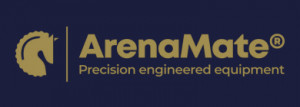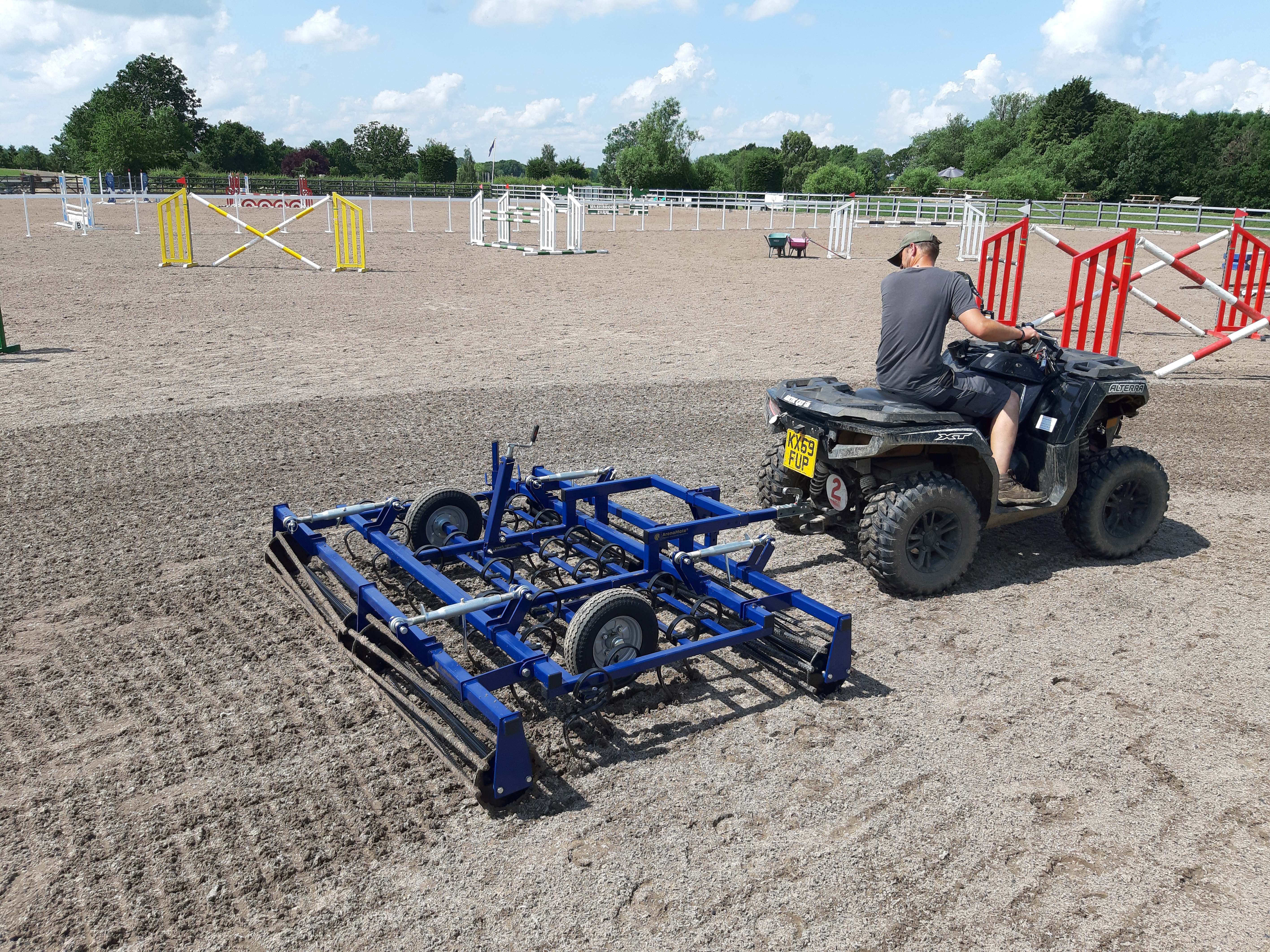Posted: 12th May 2025 | Back to news feed


Summer is finally here, bringing longer days, better weather, and the height of competition season. With an increase in dressage, showjumping, and other equestrian events, arenas are seeing much higher usage than during the colder months. However, despite this surge in activity, arena maintenance does not always increase accordingly. Ensuring that arenas are levelled and properly maintained during this busy season is crucial to the safety, performance, and longevity of the surface.
Why Maintenance Needs to Match Usage
Preserving the Longevity of the Surface
Arena surfaces are a significant investment, often costing thousands to install. Regular maintenance ensures that these surfaces remain in optimal condition, preventing premature wear and tear that can lead to costly repairs or replacements. The obvious signs that your arena surface requires some TLC may include deep tracks where similar movement patterns have been practised or jumps and poles have been placed, areas that are not as well used holding compact surface, or even visibility of the arena base where the surface has completely gone bare. These signs can often be easier to spot during the summer months as surfaces without optimal drainage will have had time to dry and settle.
Investing in the ongoing care and management of your arena surface will not only expand its lifespan, but it can also help to avoid a range of potential injuries to those using it.
Ensuring Safety While Improving Performance
The general upkeep and maintenance of an arena during the summer months is essential for the safety of both horse and rider. Uneven surfaces with dips and clumps not only increase the immediate risk of injury but can also lead to horses adapting their movement patterns to compensate for inconsistent footing. According to the Equine Surfaces White Paper by the Fédération Equestre Internationale (FEI), the physical properties of an arena surface significantly influence the horse's physiological and biomechanical responses, impacting both performance and safety. Such compensatory adaptations may result in long-term musculoskeletal issues.
Research indicates that horses modify their gait in response to abrupt changes in surface properties, which can lead to uneven limb loading and an increased risk of chronic injuries over time. Additionally, the mechanical interaction between the limb and the ground is influenced by various factors, including surface properties, which can impact performance and injury risk. Therefore, maintaining a consistent level arena surface is crucial to prevent these compensatory movements and safeguard the long-term health and performance of horses.
Recommended Levelling Frequency
To keep arenas in peak condition, levelling should be adjusted according to usage levels:
Sole-use arenas (ridden on 4-5 times a week by a small number of horses): We recommend levelling at least 1-2 times per week to maintain a consistent, safe surface.
Medium-use arenas (used for larger yards or hire, with 4-6 horses riding per day): These arenas should be levelled at least every other day to accommodate the increased traffic and prevent uneven wear.
High-use arenas (competition venues experiencing heavy daily footfall): The surface should be levelled after each class or even between classes if the entry is high. At the end of the day, all jumps and boards should be cleared, and the arena should be levelled thoroughly to prevent dips and inconsistencies from forming around jumps and high-traffic routes.
Making Maintenance Easy
Maintaining an arena surface can be labour intensive, but ArenaMate® offers features designed to make the process more efficient. Many arenas will develop a build up of surface against the boards, generated by heavy use of the outside track. The most common solution for this is manual raking, however, ArenaMate® levellers provide an adjustable side blade, which pulls in material from the kickboards, ensuring that the surface remains evenly distributed with minimal effort.
Another common issue that becomes more prevalent in the summer months is moisture control, as the adverse weather conditions can often result in an arena going from waterlogged to extremely dry and deep over a short time. Underground watering and irrigation systems such as the HIT Active Aqua system make maintaining moisture levels easier, giving confidence that the arena surface is not at risk of causing increased strain on the horse's tendons and ligaments.
By investing in solutions that will improve the longevity of your arena, provide optimal riding conditions, and encourage injury prevention, all while reducing the maintenance workload, you will see value in return through lesser investments elsewhere over a long-term period.
Conclusion
As competition season brings increased use of equestrian arenas, it’s crucial to step up maintenance efforts to match. Regular levelling ensures safety, enhances performance, and prolongs the lifespan of your arena surface. By following the recommended levelling frequency based on usage, riders and event organisers can keep their arenas in top condition throughout the summer months and beyond.
For more arena maintenance tips and advice, visit arenamate.co.uk
The Equestrian Index newsfeed is compiled from articles submitted by advertising members and expresses the opinions of those members. Watsons Directories Ltd shall not be held liable for any inaccuracies or mis-statements therein.